I have lots of models that ain't unwrapped (they don't have UV coordinates). They are quite complex to unwrap them. Thus, I decided to texture them using a seamless cubemap:
[VERT]
attribute vec4 a_position;
varying vec3 texCoord;
uniform mat4 u_worldTrans;
uniform mat4 u_projTrans;
...
void main()
{
gl_Position = u_projTrans * u_worldTrans * a_position;
texCoord = vec3(a_position);
}
[FRAG]
varying vec3 texCoord;
uniform samplerCube u_cubemapTex;
void main()
{
gl_FragColor = textureCube(u_cubemapTex, texCoord);
}
It works, but the result is quite weird due to texturing depends on the vertices position. If my model is more complex than a cube or sphere, I see visible seams and low resolution of the texture on some parts of the object.
Reflection is mapped good on the model, but it has a mirror effect.
Reflection:
[VERT]
attribute vec3 a_normal;
varying vec3 v_reflection;
uniform mat4 u_matViewInverseTranspose;
uniform vec3 u_cameraPos;
...
void main()
{
mat3 normalMatrix = mat3(u_matViewInverseTranspose);
vec3 n = normalize(normalMatrix * a_normal);
//calculate reflection
vec3 vView = a_position.xyz - u_cameraPos.xyz;
v_reflection = reflect(vView, n);
...
}
How to implement something like a reflection, but with “sticky” effect, which means that it’s as if the texture is attached to a certain vertex (not moving). Each side of the model must display its own side of the cubemap, and as a result it should look like a common 2D texturing. Any advice will be appreciated.
UPDATE 1
I summed up all comments and decided to calculate cubemap UV. Since I use LibGDX, some names may differ from OpenGL ones.
Shader class:
public class CubemapUVShader implements com.badlogic.gdx.graphics.g3d.Shader {
ShaderProgram program;
Camera camera;
RenderContext context;
Matrix4 viewInvTraMatrix, viewInv;
Texture texture;
Cubemap cubemapTex;
...
@Override
public void begin(Camera camera, RenderContext context) {
this.camera = camera;
this.context = context;
program.begin();
program.setUniformMatrix("u_matProj", camera.projection);
program.setUniformMatrix("u_matView", camera.view);
cubemapTex.bind(1);
program.setUniformi("u_textureCubemap", 1);
texture.bind(0);
program.setUniformi("u_texture", 0);
context.setDepthTest(GL20.GL_LEQUAL);
context.setCullFace(GL20.GL_BACK);
}
@Override
public void render(Renderable renderable) {
program.setUniformMatrix("u_matModel", renderable.worldTransform);
viewInvTraMatrix.set(camera.view);
viewInvTraMatrix.mul(renderable.worldTransform);
program.setUniformMatrix("u_matModelView", viewInvTraMatrix);
viewInvTraMatrix.inv();
viewInvTraMatrix.tra();
program.setUniformMatrix("u_matViewInverseTranspose", viewInvTraMatrix);
renderable.meshPart.render(program);
}
...
}
Vertex:
attribute vec4 a_position;
attribute vec2 a_texCoord0;
attribute vec3 a_normal;
attribute vec3 a_tangent;
attribute vec3 a_binormal;
varying vec2 v_texCoord;
varying vec3 v_cubeMapUV;
uniform mat4 u_matProj;
uniform mat4 u_matView;
uniform mat4 u_matModel;
uniform mat4 u_matViewInverseTranspose;
uniform mat4 u_matModelView;
void main()
{
gl_Position = u_matProj * u_matView * u_matModel * a_position;
v_texCoord = a_texCoord0;
//CALCULATE CUBEMAP UV (WRONG!)
//I decided that tm_l2g mentioned in comments is u_matView * u_matModel
v_cubeMapUV = vec3(u_matView * u_matModel * vec4(a_normal, 0.0));
/*
mat3 normalMatrix = mat3(u_matViewInverseTranspose);
vec3 t = normalize(normalMatrix * a_tangent);
vec3 b = normalize(normalMatrix * a_binormal);
vec3 n = normalize(normalMatrix * a_normal);
*/
}
Fragment:
varying vec2 v_texCoord;
varying vec3 v_cubeMapUV;
uniform sampler2D u_texture;
uniform samplerCube u_textureCubemap;
void main()
{
vec3 cubeMapUV = normalize(v_cubeMapUV);
vec4 diffuse = textureCube(u_textureCubemap, cubeMapUV);
gl_FragColor.rgb = diffuse;
}
The result is completely wrong:
I expect something like that:
UPDATE 2
The texture looks stretched on the sides and distorted in some places if I use vertices position as a cubemap coordinates in the vertex shader:
v_cubeMapUV = a_position.xyz;
I uploaded euro.blend, euro.obj and cubemap files to review.

